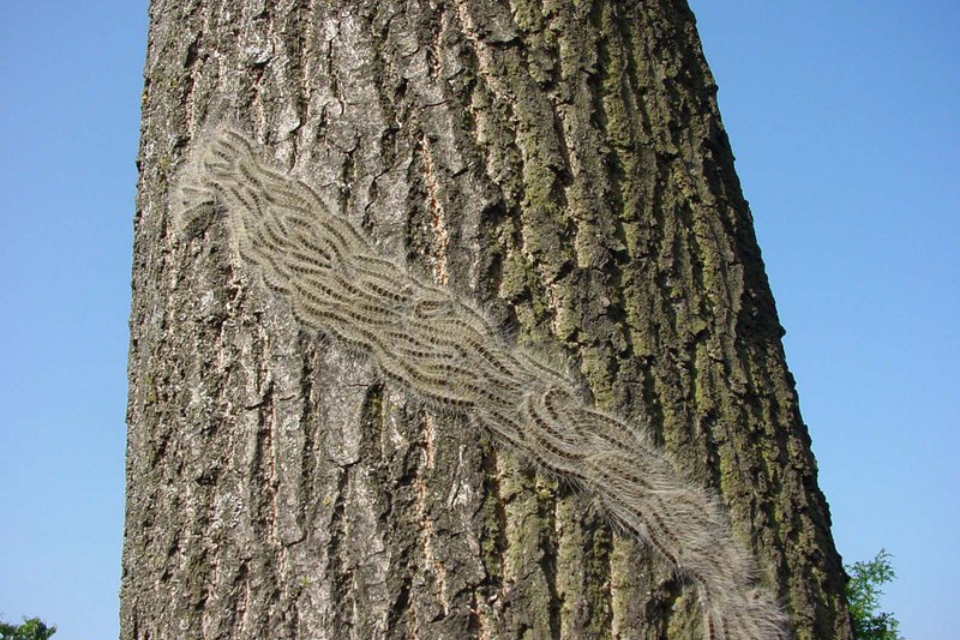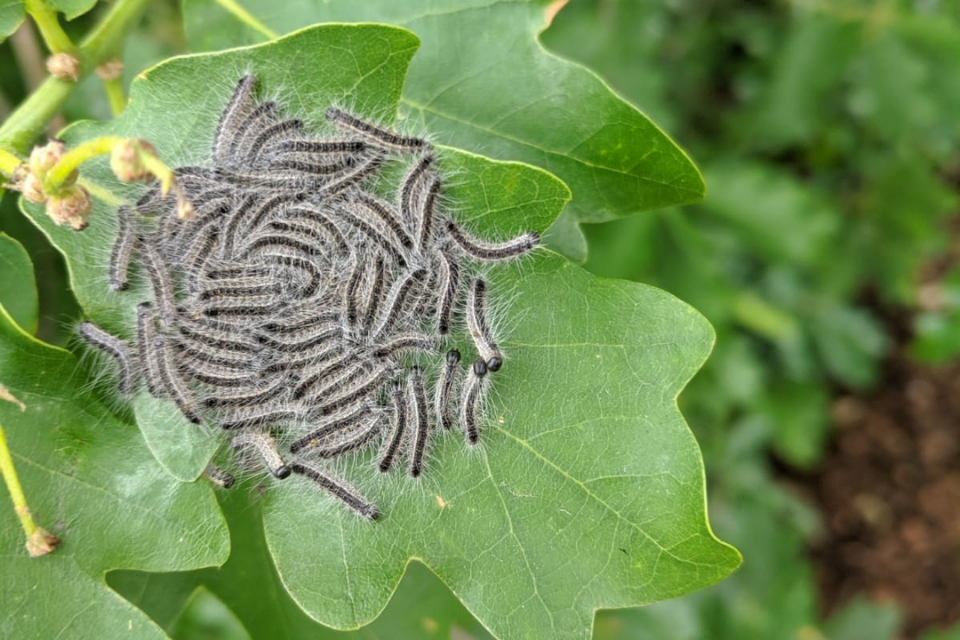Forestry Commission

Oak processionary moth (OPM) (Thaumetopoea processionea)
OPM is regulated as a quarantine pest known to be present in Great Britain. As a quarantine pest, it is under official control measures and cannot be introduced, moved, multiplied or released without prior authorisation. If you suspect you have found an OPM nest or caterpillars, you must report it to us immediately via TreeAlert.
If you own or manage oak trees, you should use this guidance to identify and survey the caterpillars and nests, and report any sightings.
You will also find information on government management of OPM and restrictions on the trade and movement of oak trees.
Updated management Zones for Oak Processionary Moth, March 2024.
Moving large oak trees within the Oak Processionary Moth (OPM) management zones.
Find out about the regulations that came into force on 24 May 2023.
Guidance on how to plan for and manage the risks associated with oak processionary moth (OPM) for landowners and site managers who have oak trees on their land, and for people who work on oak trees is also available at: Oak processionary moth: plan and manage risks.
The Oak Processionary Moth information hub includes tools to help manageOPM,including how to develop anOPMmanagement plan, and sources of information advice. Theres also an interactive map to help identify whereOPMis in the buffer and established area.

Oak processionary moth (OPM) (Thaumetopoea processionea) (image credit: Henry Kuppen)
What is OPM?
The caterpillars of OPM infest oak trees, eating (defoliating) the leaves, weakening the tree and leaving it vulnerable to other threats. OPM nests and caterpillars are also a hazard to human and animal health.
OPM was first identified in London in 2006 and has spread to some surrounding counties including Surrey and other parts of south east England. See the latest distribution map and check the OPM to see which management zone your trees are in.
OPM moths spread by flying from one tree to the next. Normally they stay close to the tree they were on as a caterpillar.
How to identify OPM
Caterpillars
The caterpillars have black heads and grey bodies covered in long white hairs. Please see these example .

OPM caterpillars
The caterpillars are only about 2mm long when they emerge in spring, and tend to remain high in the trees until they are older and larger. When they reach 1cm long they develop the irritating hairs. Theyre fully grown at 2cm long.
They usually move nose-to-tail in a procession, hence their name. You may be able to see them on all parts of the tree, on the trunk, branches and leaves, and occasionally on the ground.
Nests
Nests are usually found in early summer, in the trunks and branches of oak trees. A tree or branch can contain many nests. They can appear at any height - from the ground to the top of the tree.
You are unlikely to find nests on any other tree or shrub species, fences, walls or other similar structures (apart from structures supporting the tree).
They are typically dome or teardrop-shaped, and range from the size of a golf ball to a rugby ball. When fresh, the nests are white with white silken trails made by the caterpillars along the branches and leaves. But the nests soon become discoloured and brown, making them harder to spot.
Nests stay attached to the tree for many months after the adult moths have emerged.

OPM nest
When to look for OPM
Late spring and early summer are the best times to spot OPM caterpillars and their new nests in your oak trees. You can look for evidence of OPM from the ground, best checking from several angles. Using binoculars for this is recommended.
Spring and summer
The OPM caterpillars emerge from late March to May. Theyll move down the trees as they get older and bigger and build?nests.
Look for new nests in late spring and early summer when the caterpillars are active.?Focus on the branches and trunks at all heights, and the ground for fallen nests later in the summer into autumn.
From late June to early August, the caterpillars?retreat into the nests and form a pupa (cocoon). The pupae remain in the nests until they emerge as adult moths.?
Autumn and winter
Look for used nests in winter as they are easier to spot when there are no leaves on the oak tree or on the ground, but you can find them at any time of year.
Species commonly confused with OPM
We often receive reports of caterpillars that are not OPM. Please check the guidance fordistinguishing between OPM caterpillars and other species before submitting any reported sighting.
How to report sightings of OPM and what happens after you file a report
Any sightings should be reported to us using the Tree Alert online form. We also accept reports via email at opm@forestrycommission.gov.uk, although Tree Alerts are preferred. Please read the guidance regarding the essential information to be included in OPM reports on the OPM resource hub.
